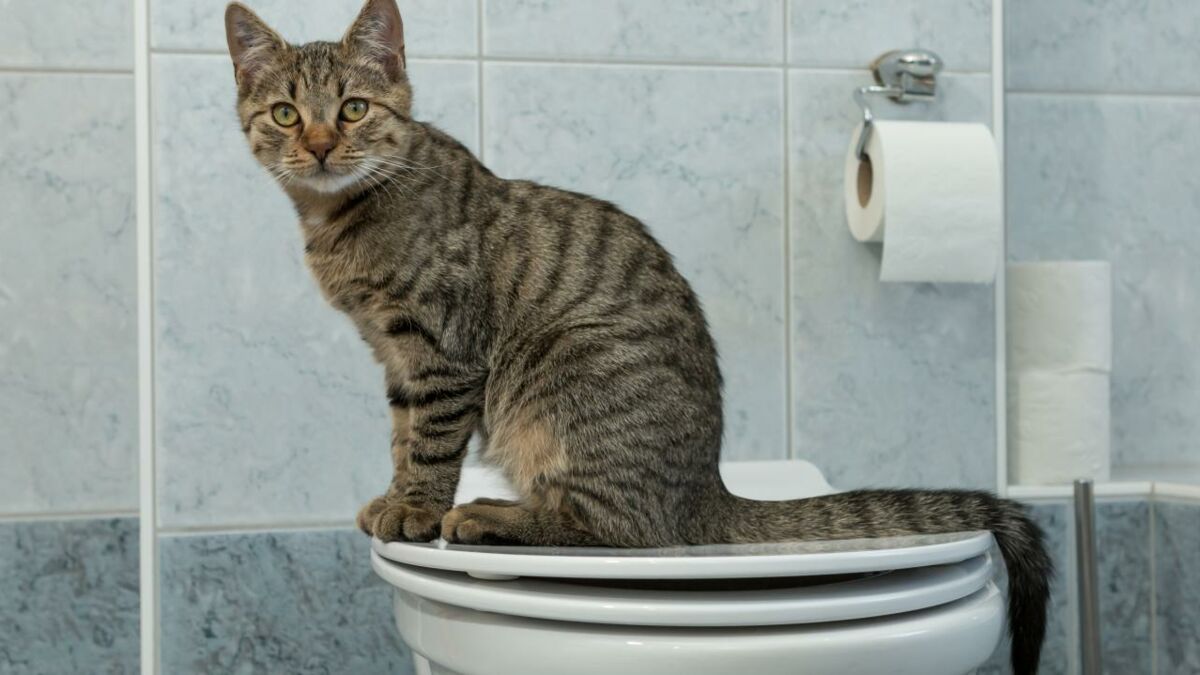Reasons You Shouldn't Flush Cat Poop Down Your Toilet - Preserve Your Plumbing System
Reasons You Shouldn't Flush Cat Poop Down Your Toilet - Preserve Your Plumbing System
Blog Article
The content listed below relating to How to Dispose of Cat Poop and Litter Without Plastic Bags is totally attention-grabbing. You should read it.

Introduction
As cat owners, it's vital to bear in mind just how we take care of our feline close friends' waste. While it might seem practical to flush pet cat poop down the bathroom, this practice can have detrimental consequences for both the setting and human wellness.
Ecological Impact
Flushing cat poop introduces dangerous virus and bloodsuckers right into the water system, positioning a significant risk to aquatic ecosystems. These impurities can negatively affect aquatic life and compromise water quality.
Wellness Risks
In addition to ecological worries, purging pet cat waste can additionally posture health risks to people. Feline feces might contain Toxoplasma gondii, a bloodsucker that can trigger toxoplasmosis-- a possibly serious health problem, especially for expecting women and people with weakened immune systems.
Alternatives to Flushing
The good news is, there are more secure and more liable means to dispose of pet cat poop. Take into consideration the adhering to alternatives:
1. Scoop and Dispose in Trash
The most common method of disposing of pet cat poop is to scoop it into a naturally degradable bag and toss it in the trash. Make sure to use a specialized trash scoop and deal with the waste promptly.
2. Usage Biodegradable Litter
Choose biodegradable pet cat trash made from materials such as corn or wheat. These trashes are environmentally friendly and can be securely taken care of in the garbage.
3. Hide in the Yard
If you have a lawn, think about hiding cat waste in a designated area away from vegetable yards and water resources. Be sure to dig deep sufficient to stop contamination of groundwater.
4. Set Up a Pet Waste Disposal System
Purchase an animal waste disposal system especially created for cat waste. These systems use enzymes to break down the waste, decreasing odor and ecological influence.
Verdict
Liable family pet possession expands beyond giving food and shelter-- it likewise includes correct waste administration. By refraining from flushing feline poop down the commode and opting for different disposal methods, we can lessen our ecological impact and secure human health.
Why Can’t I Flush Cat Poop?
It Spreads a Parasite
Cats are frequently infected with a parasite called toxoplasma gondii. The parasite causes an infection called toxoplasmosis. It is usually harmless to cats. The parasite only uses cat poop as a host for its eggs. Otherwise, the cat’s immune system usually keeps the infection at low enough levels to maintain its own health. But it does not stop the develop of eggs. These eggs are tiny and surprisingly tough. They may survive for a year before they begin to grow. But that’s the problem.
Our wastewater system is not designed to deal with toxoplasmosis eggs. Instead, most eggs will flush from your toilet into sewers and wastewater management plants. After the sewage is treated for many other harmful things in it, it is typically released into local rivers, lakes, or oceans. Here, the toxoplasmosis eggs can find new hosts, including starfish, crabs, otters, and many other wildlife. For many, this is a significant risk to their health. Toxoplasmosis can also end up infecting water sources that are important for agriculture, which means our deer, pigs, and sheep can get infected too.
Is There Risk to Humans?
There can be a risk to human life from flushing cat poop down the toilet. If you do so, the parasites from your cat’s poop can end up in shellfish, game animals, or livestock. If this meat is then served raw or undercooked, the people who eat it can get sick.
In fact, according to the CDC, 40 million people in the United States are infected with toxoplasma gondii. They get it from exposure to infected seafood, or from some kind of cat poop contamination, like drinking from a stream that is contaminated or touching anything that has come into contact with cat poop. That includes just cleaning a cat litter box.
Most people who get infected with these parasites will not develop any symptoms. However, for pregnant women or for those with compromised immune systems, the parasite can cause severe health problems.
How to Handle Cat Poop
The best way to handle cat poop is actually to clean the box more often. The eggs that the parasite sheds will not become active until one to five days after the cat poops. That means that if you clean daily, you’re much less likely to come into direct contact with infectious eggs.
That said, always dispose of cat poop in the garbage and not down the toilet. Wash your hands before and after you clean the litter box, and bring the bag of poop right outside to your garbage bins.
https://trenchlesssolutionsusa.com/why-cant-i-flush-cat-poop/

We had been made aware of that article on Don’t flush cat feces down the toilet through an associate on another blog. If you please take a moment to promote this blog posting if you enjoyed reading it. I treasure reading our article about Don’t flush cat feces down the toilet.
Show Details Report this page